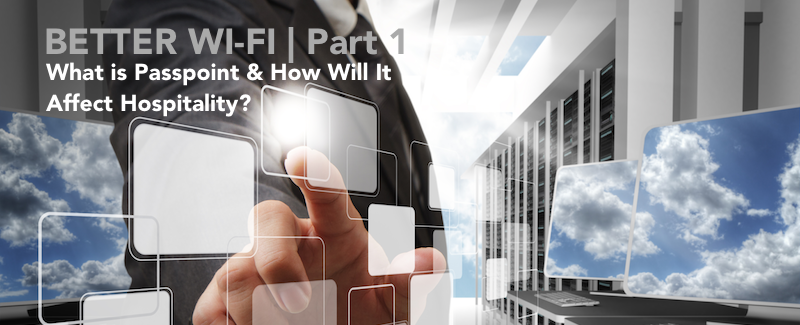
By Andrew Harrison, Eleven Product Marketing & Sales Enablement Manager
This is part one of a 3-part series, make sure to read parts two and three after this!
Today, you typically gain Internet access at hotels by typing your identity (and/or payment) information into a captive portal login page after connecting to a specific Wi-Fi hotspot. There are several issues with today’s connection process, including:
- Knowing and finding the appropriate network SSID from a long list
- Login processes and procedures that vary greatly and often not intuitive
- Login screens that are slow to load and are not mobile-friendly
- Repetitive re-entry of information to maintain connectivity
- Security and privacy levels are difficult to ascertain and maintain
Hotspot 2.0 (also known as Passpoint) has evolved to solve many of these issues.
Hotspot will allow the network to identify and authenticate guests based on the credentials already stored in the network. When signing onto the network, guests just download a profile on their device. This allows guest devices to automatically connect to the hotel's network whenever they are in range.
For hoteliers, this means gaining access to foot and data traffic analysis, connection trends and analytics, and the ability to identify and accommodate the 'silent traveler' during their stay.
4 Business Opportunities Hotspot 2.0 Will Deliver
Today’s guests expect fast, accurate, and personalized service; Hotspot will deliver several new business opportunities for hoteliers to meet these guest demands. Below are the top 4 business opportunities:
- Segmented Experiences – service providers can provide ‘layered services’ on the same network; for example, private access for employees and public access for guests can now be delivered through one network
- Personalized, Geo-Specific Marketing – properties can individually tailor and ‘push’ promotions to guest mobile devices based on individual preferences and/or location.
- Mobile Offload – with the exponential growth of mobile data traffic, cellular carriers are investing in more opportunities to move that traffic onto existing Wi-Fi networks.
- Secure Mobile Payments – the added security layers of authentication and encryption will make mobile payments more secure.
Check out our video on the guest journey that Hotspot 2.0 creates!